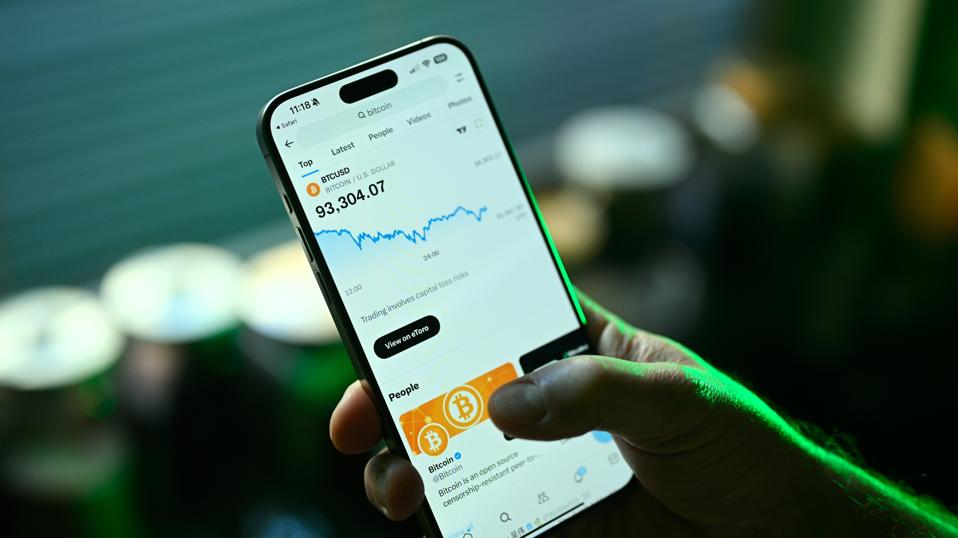Bitcoin ETFs In 401(k)s: What Retirement Savers Should Know

Disclosure: The author is a Certified Public Accountant and Certified Financial Planner who does not hold a financial interest in any bitcoin ETFs mentioned.
Spot bitcoin exchange-traded funds (ETFs) are reshaping how digital assets fit into mainstream portfolios. As year-end portfolio reviews and contribution deadlines approach, more retirement plan providers are allowing exposure to bitcoin through ETFs—offering access without the complexities of managing wallets or private keys.
Since their 2024 debut, spot bitcoin ETFs have attracted massive inflows from individual investors. According to CoinGlass data, these funds have drawn about $150.6 billion through October 22, representing roughly 7% of bitcoin’s circulating supply of 20 million coins. For retirement savers, funds like VanEck’s HODL have returned about 19% year to date as of October 20, compared to a 7.5% gain from the Bloomberg U.S. Aggregate Bond Index. Here are four key trends shaping how bitcoin ETFs may fit into long-term retirement strategies.
1. Low Fees Open The Door To Bitcoin In Retirement Accounts
Expense ratios for spot bitcoin ETFs have dropped significantly—down to 0.12% for BlackRock’s iShares Bitcoin Trust (IBIT) and 0.25% for Fidelity’s Wise Origin Bitcoin Fund (FBTC)—compared with 1.5% for older futures-based products. Lower costs make it easier for 401(k) and IRA plans to include these funds as optional holdings.
A September 2025 NerdWallet survey found that roughly 10% of U.S. adults with retirement accounts already hold some form of crypto exposure, often through ETFs that trade like stocks and are backed by regulated custodians such as Coinbase. As Morningstar notes, these lower fees align with prudent saving habits, allowing investors to add digital exposure without sacrificing long-term returns. Bitcoin’s role is gradually shifting from speculative asset to an equity-like component of diversified portfolios.
2. Inflation Hedge: Bitcoin ETFs May Complement Bond-Heavy Portfolios
Inflation rose 2.9% for the 12 months ending August 2025, according to the U.S. Bureau of Labor Statistics. For savers relying on bonds, that can raise questions about maintaining real purchasing power. Bitcoin ETFs—whose returns show a roughly 0.3 correlation to gold—offer a potential counterbalance during inflationary stretches. With a capped supply of 21 million coins, bitcoin has characteristics some investors view as a long-term store of value.
Morningstar simulations indicate that even modest bitcoin ETF allocations in a traditional 60/40 stock-bond portfolio could reduce volatility during inflationary cycles such as 2022, without sacrificing growth potential. Within tax-deferred accounts like 401(k)s or IRAs, those potential gains compound without triggering short-term capital gains taxes, though investors should still track basis in taxable accounts.
3. Rebalancing Strategies Help Manage Volatility
As year-end contribution deadlines approach, more savers are adding small bitcoin ETF positions within rebalancing routines. Fiduciary best practices emphasize consistent guardrails—quarterly or annual reviews—to prevent allocation drift as asset prices fluctuate.
Even historically conservative firms are adapting. Vanguard, once a crypto holdout, is exploring access to spot bitcoin ETFs under CEO Salim Ramji, signaling a cautious shift. Analysts there warn that long-term investors should set clear allocation limits and automate rebalancing, similar to how Empower’s retirement platforms auto-adjust when an asset exceeds preset thresholds. These systematic guardrails can help keep digital assets from dominating retirement portfolios.
4. ETF Liquidity Can Help Investors Navigate Market Swings
Bitcoin’s past bear markets have seen average drawdowns of around 50%. ETFs, however, provide liquidity and pricing transparency that direct holdings lack. On October 7 alone, bitcoin ETFs recorded $1.2 billion in net inflows, according to CoinDesk, underscoring their appeal even amid volatility.
Gradual allocation remains key. Morningstar models suggest that adding exposure in small steps—especially during market pullbacks—can help investors stay disciplined and avoid taking unnecessary risks. This approach also helps safeguard cash that may later be needed for required minimum distributions (RMDs) or day-to-day living expenses. With bitcoin trading near $109,500 as of October 23, ETFs may serve as an educational entry point rather than a speculative gamble.
Bitcoin ETFs still carry meaningful risks, including sharp price declines, custody concerns, and evolving IRS guidance on digital asset taxation. Yet their growing presence in 401(k)s and IRAs shows how traditional retirement frameworks are adapting to new asset classes. For most savers, these funds represent less a revolution than an incremental step toward broader diversification—bridging traditional retirement investing with the emerging world of digital assets.
Content Original Link:
" target="_blank">


































































